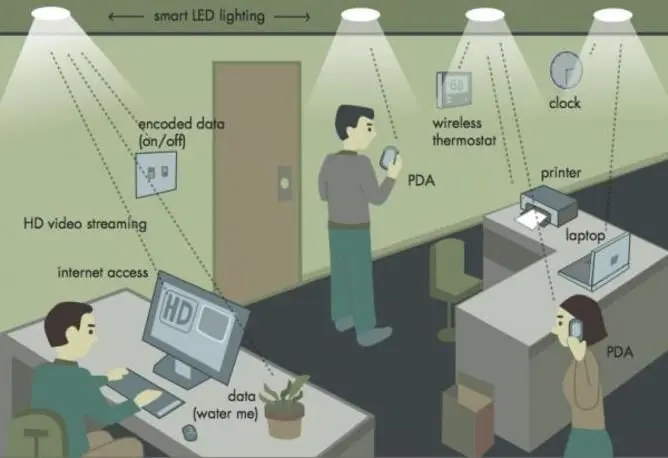Next in the world of wireless communication is Li-Fi, a technology that enables data transfer through visible light communication (VLC). With lab tests reaching speeds of up to 224 gigabits per second this year, the potential for this new technology to change the way we browse the internet is quite high.

What’s better: The experiments left the lab for the first time and were taken to industrial and office environments in Tallinn, Estonia’s capital city, reaching data transmissions of up to 1GB per second, a speed that exceeds 100 times the average speed of Wi-Fi technology.
“We are running some pilot projects with different industries where we can use VLC technology,” Deepak Solanki, CEO of Estonian technology company Velmenni, told IBTimes UK. “We have now been able to design a smart lighting solution for industrial environments where data transfer is carried out by light. We are also conducting a pilot project for a private client where we set up a Li-Fi network to provide internet access in an office space.”
SEE ALSO: What is 5G used for in a mobile phone and what advantages does it have over 4G
The history of Li-Fi.
Harald Haas of the University of Edinburgh in Scotland was responsible for the invention of Li-Fi in 2011, when he first demonstrated that through the flickering of LED light, it could achieve data transfers much larger than a cellular repeater. To give you an idea of how fast this is, let’s take 224 gigabits per second as a reference. In mortal terms, that would be equivalent to downloading 18 movies of 1.5 GB (each) every second.
The technology is based on Visible Light Communication, a medium that uses visible light between 400 and 800 terahertz (THz). Let’s imagine how it works as an evolution of Morse code – by simply changing the state of the LED at extreme speeds according to a defined pattern, it becomes possible to write and transmit information in binary code.
And if you’re imagining the dizziness that will be produced by the strobe effect of the LEDs turning off and on full steam ahead, there’s nothing to worry about. We are talking about LEDs that can turn on and off at speeds that are imperceptible to the human eye.

In addition to the speed advantage over Wi-Fi, Li-Fi offers much more security as it does not go through the walls of a room, a feature that also offers less interference between devices.
The future of Li-Fi.
And while it will probably take decades for Li-Fi to replace Wi-Fi for good, it’s quite possible that the combination of these technologies in the short term will evolve networks into something more efficient and secure.
Many industrial complexes, offices and private residences have been specially equipped with Wi-Fi-compatible infrastructure, and removing all of this to replace Li-Fi does not seem feasible, so the idea is to adapt the devices that are now available to work in combination with Li-Fi technology.
Researchers around the world are focusing on just this. The Conversation in 2025 cited the work Haas and his team are doing through PureLiFi, a company that offers plug-and-play applications for secure wireless Internet access with a capacity of 11.5 MB, comparable to first-generation Wi-Fi. French company Oledcomm is installing its own Li-Fi technology in local hospitals.
If applications like this, and Velmenni’s in Estonia, are successful, we could be well on our way to achieving the dream that Haas enunciated in a 2011 TED talk, everyone with access to the Internet through LED bulbs at home.
“All we have to do is install a small microchip in each potential lighting device so that this combines two basic functionalities: lighting and wireless data transfer,” Haas said. “In the future we could not only have 14 billion light bulbs, we could also have 14 billion Li-Fis deployed around the world for a cleaner, greener and brighter future.” With information from ScinceAlert
Related: The Coffee Table Trick: The Simple and Effective Method to Make Your WiFi Faster



Comments